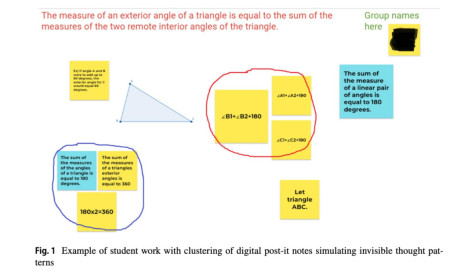Employing Digital Tools for Collaborative and Flexible Mathematical Proving

Article / Journal
Author(s) / editor(s):
Vasiliki (Vicky) Laina
Year: 2024
Language(s): English
Abstract:
There is a clear disconnect between the linear and deductive presentation of
written proofs and the non-linear and messy process of constructing one. This
disconnect poses challenges for students who do not often have opportunities,
or the necessary supports, to navigate the transition between the two, quite often
contributing to feelings of exclusion. It is therefore important to design learning
environments with increased epistemic transparency, so that students can flexibly
work on mathematical problems while learning and failing together. In this article,
I present an instructional design for online collaborative proving activities for
secondary school students. I discuss how the use of digital post-it notes and digital
shared workspaces can create opportunities for multiple ways of participating for
youth, support the navigation of different reasoning patterns, and provide space for
extended across-group knowledge sharing. I share a classroom example of how this
could look like in practice and discuss main implications of some of the affordances
and constraints of the tools used for equitable and respectful student participation
in mathematical epistemic practices.
https://link.springer.com/content/pdf/10.1007/s40751-024-00157-6.pdf
Post created by: Lymor Wolf Goldstein